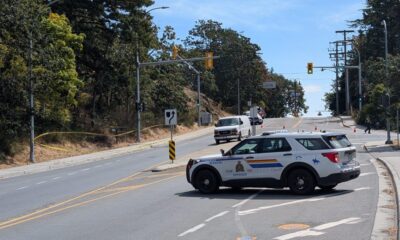Education
Manitoba Launches Strategy to Reduce Teacher Turnover in First Nations Schools

Manitoba is implementing a new strategy aimed at addressing the high turnover rates of teachers in First Nations schools and bridging the achievement gap between Indigenous and non-Indigenous students. Over the past 15 months, the province’s Department of Education has been developing a comprehensive plan to attract and retain educators who are committed to living and working in Northern communities.
Charles Cochrane, who oversees the Manitoba First Nations School System, expressed concern about the impact of teacher turnover. “Nobody likes to lose one of their teachers, especially those that have established that connection to the students and the community — nobody wants to go through that,” he stated. Frequent mid-year departures disrupt the learning process and complicate staffing challenges, especially during the regular hiring period.
According to government documents, turnover rates in northern First Nations schools can range from 30 to 50 percent annually. This high turnover not only affects classroom stability but also hinders educational programming and student performance. Recent briefings obtained through freedom of information requests indicate that officials are actively strategizing to mitigate these issues.
The Office of Indigenous Excellence has appointed a lead to develop a strategy focused on increasing the number of teachers who are First Nations, Métis, Inuit, or traditional language speakers. An excerpt from a presentation shared with superintendents emphasized the importance of representation: “Representation matters.” The lack of Indigenous educators can negatively influence students’ sense of belonging, which in turn affects their engagement and academic success.
The Winnipeg Indigenous Executive Circle has consistently called for a holistic approach to training more Indigenous teachers. The advocacy group estimates that school divisions in urban areas would need to recruit over 600 Indigenous teachers to reflect the demographics of the Indigenous student population accurately.
Cochrane believes that enhancing community-based teacher training programs is crucial to solving the teacher shortage. “Many of our community members are parents, and they don’t want to leave their communities and move,” he said, emphasizing the need for local solutions.
The province’s presentation also highlighted that the “achievement/opportunity gap” between Indigenous and non-Indigenous students has remained unchanged for the past 20 years. In June 2024, data indicated that 90 percent of non-Indigenous students in the high school cohort from 2020-2021 to 2023-2024 graduated within four years, while just over half of Indigenous students achieved the same milestone.
Reg Klassen, a retired chief superintendent from northern Manitoba’s Frontier School Division, highlighted the challenges of recruiting and retaining teachers in smaller communities. Factors such as isolation, complex workloads, and limited access to amenities contribute to difficulties in retaining staff. He suggested that post-secondary institutions and employers should enhance outreach efforts in remote areas and invest in building local capacity among residents.
“My suggestion would be: find your teachers. You don’t need too many of them, but go find your teachers… and begin a program, for a month or two months (in-person, locally) and get them to have some early success,” Klassen advised. He underscored the importance of fostering relationships to encourage candidates to pursue teaching opportunities away from their home communities.
The Education Department’s presentation reiterated the necessity of providing students with a stable teaching workforce to make progress in addressing educational inequities. Frontier, which oversees 39 schools across communities such as Brochet, Matheson Island, and Cross Lake, has invested millions in upgrading teacher housing and improving internet access to attract and retain employees.
“Starlink was a saviour,” Klassen noted, referring to the satellite internet service that allows teachers in remote areas to maintain connections with family and friends. He added that community involvement is crucial for teachers who come from outside the region. Engaging in local activities helps build connections, making it less likely for educators to leave after a short tenure.
As part of the ongoing strategy, the province is seeking feedback regarding community capacity for training teachers and exploring innovative certification pathways, alongside equitable university entrance and hiring practices.
Neither Education Minister Tracy Schmidt nor Jackie Connell, the Assistant Deputy Minister of Indigenous Excellence in Education, were available for comment at the time of reporting.
Maggie Macintosh, who covers education, highlights the ongoing efforts to improve educational outcomes within Manitoba’s First Nations. Her reporting is part of a tradition of reliable journalism, backed by a dedicated editorial team.
-

 Science2 months ago
Science2 months agoToyoake City Proposes Daily Two-Hour Smartphone Use Limit
-

 Health2 months ago
Health2 months agoB.C. Review Reveals Urgent Need for Rare-Disease Drug Reforms
-

 Top Stories2 months ago
Top Stories2 months agoPedestrian Fatally Injured in Esquimalt Collision on August 14
-

 Technology2 months ago
Technology2 months agoDark Adventure Game “Bye Sweet Carole” Set for October Release
-

 World2 months ago
World2 months agoJimmy Lai’s Defense Challenges Charges Under National Security Law
-

 Technology2 months ago
Technology2 months agoKonami Revives Iconic Metal Gear Solid Delta Ahead of Release
-

 Technology2 months ago
Technology2 months agoSnapmaker U1 Color 3D Printer Redefines Speed and Sustainability
-

 Technology2 months ago
Technology2 months agoAION Folding Knife: Redefining EDC Design with Premium Materials
-

 Technology2 months ago
Technology2 months agoSolve Today’s Wordle Challenge: Hints and Answer for August 19
-

 Business2 months ago
Business2 months agoGordon Murray Automotive Unveils S1 LM and Le Mans GTR at Monterey
-

 Lifestyle2 months ago
Lifestyle2 months agoVictoria’s Pop-Up Shop Shines Light on B.C.’s Wolf Cull
-

 Technology2 months ago
Technology2 months agoApple Expands Self-Service Repair Program to Canada









